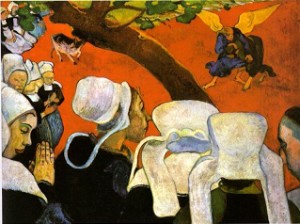
Arquivo para November 22nd, 2017
Art, autonomy and see
OWhat remains veiled in recent art and which is present in Hegel’s  discourse, and even more so in the apparent rupture with the departure of the “plane” to the three-dimensional forms of the “polite” is still an idealist art of what Hegel called “autonomy” and that due to this idealism, Rancière called “autonomization.”
discourse, and even more so in the apparent rupture with the departure of the “plane” to the three-dimensional forms of the “polite” is still an idealist art of what Hegel called “autonomy” and that due to this idealism, Rancière called “autonomization.”
Rancière clarifies that it is autonomization: “one of these elements, the ‘breakdown of the threads of representation’ that bound them to the reproduction of a repetitive way of life. It is the substitution of these objects for the light of their appearance. From that point on, what happens is an epiphany of the visible, an autonomy of the pictorial presence. “(Rancière, 2003, p.87)
This autonomization is ultimately the famous “art for art” or in the opposite sense of “utilitarianism of art,” but both can not deny either the specific aspect of art and its connection with words or their usefulness “as useful as useful, “the writer Vitor Hugo would say, but it is about accepting the emancipation of the spectator through” interaction. ”
See Rancière writes in art: “Whether it be a Descent from the Cross or a White Square on a white background, it means to see two things at once” (Rancière, 2003, p.87), which is a relation between “the exposition of the forms and surface of inscription of words. “(ibidem), where the presences are” two regimes of the braid of words and forms. ”
To understand the problem of vision Rancière uses the painting of Gauguin Peasants in the field, there is a “first picture: peasants on a picture look at the fighters in the distance” (Rancière 2003: 95), the presence and the way they are dressed show that it is something else then a second picture arises: “they must be in a church” (idem), to make sense the place should be less grotesque and realistic and regionalist painting is not found, then there is a third picture: “The spectacle that it represents has no real place. It is purely ideal. Peasants do not see a realistic scene of preaching and fighting. They see – and we see – the Voice of the preacher, that is, the Word of the Word that passes through this voice. This voice speaks of Jacob’s legendary combat with the Angel, of terrestrial materiality with heavenly ideality. “(Ibid.)
In this way, Rancière affirms, the description is a substitution, the word for the image, and substitutes it “for another living word, the word of the scriptures” (Ranciere, 2003, 96)
It also makes a connection with the pictures of Kandinsky,he writes In the space of the visibility which his text constructs Gauguin’s painting is already a picture like those that Kandinsky will paint and justify: a surface in which lines and colors become more expressive signs obeying the unique coercion of ‘inner necessity'” (Rancière, 2003, p. 97), and we have explained earlier that it is not pure subjectivism because it makes a connection with both the inner thought and the thought about the description in the picture.
The important thing is the symbiosis between the image, the words and the vision resulting from a “unveiling” of the image that can be translated into words.

